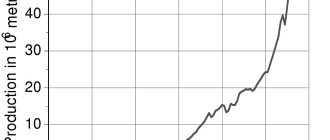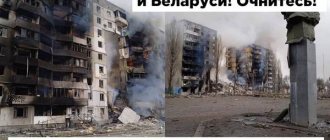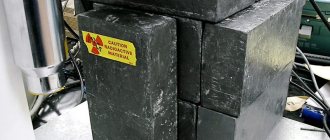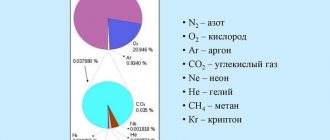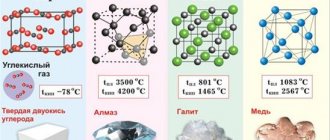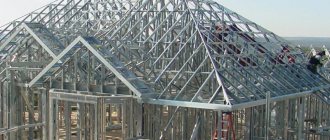Blue fuel extracted from the depths contains various gases: methane, butane, propane, nitrogen, helium, hydrogen sulfide. Some of them are components of chemical production, others are burned to produce energy (electrical and thermal). Some serve as gas engine fuel.
transportation of liquefied gas
If it is necessary to deliver fuel to a remote site, then, due to geographical nuances, it is often more profitable to do this not through a pipeline, but in liquefied form. That is, liquefied gas simplifies delivery to remote sites.
What are LNG and LPG?
At optimal air temperature and normal pressure, hydrocarbons are in a gaseous state. But, they turn into a liquid state if the pressure is slightly increased (without changing temperature).
Artificially liquefied natural gas (at a temperature of minus 160 degrees) is easier to store and transport. The volume is 600 times less than the original one.
In industrial conditions, natural liquefied gas is also used for APG fractionation processes that take place at low temperatures, from which propane, ethane, butane, gas gasoline and helium are separated.
Important: Liquefied gas dissolves in air, turning into a gaseous state. If the concentration level reaches 5-15% and contact occurs with a flame source, the gas may ignite. If it is less than 5%, this will not happen.
Many countries, including Spain and France, Japan and Belgium, South Korea, have been using LNG for many years as one of the main sources of energy resources, needed for industrial needs, used in municipal complexes and in everyday life, in petrochemical plants and as fuel for cars. .
For Russian gas supply systems, technical propane is of greatest interest, the vapors of which have good elasticity. Thanks to this, it is easy to select the required amount of vapor from a gas holder or cylinder filled with this gas even at sub-zero temperatures, which allows such containers to be placed outside in winter.
Butane, compared to propane, is cheaper. When it burns, 4 carbon atoms and 10 hydrogen atoms are involved in the reaction, which indicates a high thermal capacity. But the vapor pressure of butane is lower, which does not allow it to be used at subzero temperatures.
Also of interest is the propane-butane mixture. LPG is used in everyday life and public utilities. In Russian climatic conditions, uninterrupted operation of tank installations cannot be ensured if the mixture contains more than 60% butane.
Appearance and properties
Externally, such a gas looks like a colorless, odorless liquid. He is not aggressive, i.e. does not lead to corrosion. The density of LNG is less than half the density of water. In its liquid state it is non-flammable and non-toxic.
Liquefied gas
Important: To bring the substance to its original state, before use, the liquefied gas is evaporated without access to oxygen (air). During combustion, carbon dioxide (carbon dioxide) and water vapor are released.
LNG evaporates very quickly, leaving no traces on the soil and water.
Main technical characteristics
The boiling point lies in the range of 158-163 degrees Celsius. Gas density varies from field to field. It lies in the range of 430-470 kg/m³. In addition, it is determined by the pressure at the place of its calculation, and temperature. Therefore, when converting tons of gas to cubic meters, they say “approximately”, i.e. 1 ton of LNG is equal to approximately 1.38 thousand cubic meters.
Standard values for these parameters are established by the National Institute NISN. For temperature it is 20 degrees Celsius (293.15 K), for pressure it is 1 atmosphere (101.325 kPa).
Component composition
75-99 percent of it is methane. In addition to it, the composition contains: ethane, hydrogen sulfide, propane, etc. The density of the components differs significantly:
- for propane it is 1.872 kg/m³;
- for ethane - 1.263 kg/m³;
- for methane – 0.668 kg/m³.
Actions to take when a container freezes
If you notice that your equipment has begun to work intermittently, then you should pay attention to the surface of the gas cylinder. Most likely it was covered with frost. To resume the correct functioning of the equipment, it is necessary to create optimal conditions for this. If this is not done in time, then the gas appliance may completely stop working.
The first step is to determine why freezing occurs. If this is due to weather conditions, then you need to create an optimal temperature regime for the container; how to do this will be written below.
If cooling occurs due to intensive gas consumption, then it is necessary to reduce consumption. This can be done by installing an additional cylinder, or several. Depending on the amount of fuel consumption. Connection of several cylinders is carried out using a special connecting ramp.
To connect several cylinders to a gas system, use a special metal ramp, to which a certain number of gas cylinders are connected; a valve and a pressure gauge are installed on the ramp
A pressure compensation valve and a pressure gauge must be installed in the rail to monitor the fuel level in the combined system.
Ecological fuel
Liquefied gas has a fairly high octane number and is distinguished by high energy indicators, which allows it to be used for refueling cars. Without harming the environment, the use of this fuel reduces oil consumption and engine wear. Its price is lower than the cost of gasoline. In addition, liquefied gases are safe, and refueling is carried out at specialized gas stations. This explains why it is considered a more economical fuel than gasoline.
Compliance with safety regulations
It is very important to follow basic safety rules to prevent tragic consequences. Working with gas equipment is extremely dangerous, so it is not recommended to connect or change the structural elements of the equipment yourself.
If gas equipment is used incorrectly, the cylinder may explode, which in most cases leads to a strong fire with tragic consequences.
Before connecting the cylinder to the stove or taking any action to repair it, it is best to contact gas equipment specialists. If gas installations are handled incorrectly, or operating conditions are violated, the gas cylinder may explode and lead to a fire.
To date, many tragic cases have been recorded, including deaths. Therefore, we strongly recommend that you carry out work related to gas responsibly, as well as when using the equipment.
LNG production technology
Gas liquefaction occurs in several stages, in which it is compressed 5-12 times, cooled and transferred further.
At the first stage, it is necessary to remove water from natural gas in order to protect refrigeration equipment from its aggressive effects, as well as hydrogen, as well as helium, sulfur compounds, nitrogen and other impurities, for which deep absorption purification is used, passing the mixture through a molecular sieve.
This is followed by the second stage, which consists in removing heavy hydrocarbons from the mixture. Fractionation leaves a gas containing only methane and ethane (or butane and propane). The resulting fraction contains less than 5% impurities.
At the last stage of the process, the liquefaction of the cooled gas occurs. The process is quite energy-intensive: up to 25% of the total amount is required.
Modern production uses 2 technological processes:
- compression, i.e. condensation taking place at constant pressure. The disadvantage is the high energy consumption, which is why the method is considered ineffective;
- method based on heat exchange processes, i.e. refrigeration, which involves the use of a cooler, as well as turbo-expander, also called throttling. It allows the rapid expansion of gas to obtain the desired temperature. The disadvantages of the method include the low liquefaction coefficient - at the level of 4%, which requires repeated distillation. It is possible to increase it to 14% by using a compressor-expander circuit.
The use of thermodynamic schemes makes it possible to increase efficiency to 100%:
- application of a cascade boiling point reduction cycle. Refrigerants at different stages are: propane, nitrogen, ethane, methane, purified or sea water, air;
- a cycle that simultaneously uses 2 refrigerants – ethane and methane;
- use of expansion cycles in liquefaction technology.
Several such technologies are leading on the modern market:
- up to 82% of the total market belongs to AP-C3MR™, AP-SMR™ and AP-X™ technologies, which are used to produce significant volumes of LNG;
- Optimized Cascade, developed by ConocoPhillips;
- in production (for internal use) compact GTL units are used;
- to obtain LNG involved in the production of gas motor fuel (gas motor fuel), local installations are widely used;
- FLNG – the use of sea tankers and ships with gas liquefaction units. This allows you to have access to fields that are inaccessible to gas pipeline infrastructure;
- the use of floating LNG platforms (for example, the one being built in a 25-kilometer zone in Australia by Shell).
Prospects for liquefied hydrogen
In addition to direct liquefaction and use in this form, it is also possible to obtain another energy carrier from natural gas - hydrogen. Methane is CH4, propane is C3H8, and butane is C4H10.
The hydrogen component is present in all these fossil fuels, you just need to isolate it.
The main advantages of hydrogen are environmental friendliness and widespread occurrence in nature, however, the high price of its liquefaction and losses due to constant evaporation reduce these advantages to almost nothing
To transform hydrogen from a gas into a liquid, it must be cooled to -253 °C. For this purpose, multi-stage cooling systems and “compression/expansion” installations are used. Currently, such technologies are too expensive, but work is underway to reduce their cost.
We also recommend reading our other article, where we described in detail how to make a hydrogen generator for your home with your own hands. For more details, follow the link.
Also, unlike LPG and LNG, liquefied hydrogen is much more explosive. The slightest leak of it in combination with oxygen produces a gas-air mixture that ignites at the slightest spark. And storage of liquid hydrogen is possible only in special cryogenic containers. Hydrogen fuel still has too many disadvantages.
Manufacturers
The main countries producing liquefied gas are, according to 2009 data:
- Qatar - the volume reaches almost 50 billion m³;
- Malaysia and Indonesia - 29.5 and 25 billion cubic meters, respectively;
- Australia and Algeria – 24 and 21 billion m³.
Japan ranks first among LNG importers. Gas is also purchased by: Spain, USA, France, India.
There are also 2 operating factories in Russia. One of them is the Sakhalin-2 project launched in 2009. The controlling stake is owned by Gazprom. The co-owners are: 27.5% Shell, 12.5 Mitsui, 10% Mitsubishi. At the end of 2015, annual production reached 10.8 million tons, which is 1.2 million tons more than the designed capacity. Unfortunately, due to falling prices on the world market, exports have decreased noticeably in recent years.
Another significant player in Russia is Novatek (Yamal-LNG).
The Americans did not stand aside either: they commissioned 5 LNG export terminals, the total capacity of which is 57.8 billion tons/year. It is clear why there has been a fierce confrontation between these countries for many years.
Physical properties[edit | edit code]
Colorless, odorless gas[6]. Very slightly soluble in water. Boiling point −42.1 °C. Freezing point −188 °C. Forms explosive mixtures with air at vapor concentrations from 1.7 to 10.9%. Critical temperature of propane Tcr = 370 K, critical pressure Pcr = 4.27 MPa, critical specific volume Vcr = 0.00444 m3/kg[7] The density of liquefied propane at 298 K is 0.493 t/m3. Gas easily liquefies when pressure increases.
- Density of the gas phase under normal conditions = 2.019 kg/m3.
- Density of the gas phase at a temperature of 15°C = 1,900 kg/m3.
- Specific heat of combustion = 48 MJ/kg.
Areas of application
In addition to the fact that liquefied gas (grade PBA, used at air temperatures not lower than -20 degrees, and PA) is used in the automotive sector as a fuel that is more economical, safe, cheap and environmentally friendly, it is used in heating systems and in industry (as a source of heat and cold in metalworking, ceramics and glass processing), for household and utility needs (BT, PBT, PT brands).
The main players in the fuel segment are butane, methane and propane, which combine the following indicators:
- no smell. On the contrary, such fuel is given an aromatic marker to quickly detect leaks;
- safety, i.e. resistance to possible fire, which occurs at temperatures of plus 429 degrees (butane), at 466 (butane) and at 537 (methane). For comparison, diesel fuel and gasoline ignite when they reach 250-300 degrees;
- combustion is complete, thereby minimizing harm from emissions into the environment;
- minimal carbon deposits, allowing to extend the service life of piston cylinders, spark plugs and the engine combustion chamber;
- high octane number: 110 for methane and 100 for a propane-butane mixture. It should be noted that the mixtures can be used in different climatic zones, but taking into account the fact that in a liquefied state they are not frost-resistant, but are immune to zones with a hot climate: these components in the mixture complement each other and form a fairly stable substance. Unlike them, propane reacts to high temperatures, which leads to an increase in pressure in the cylinders where it is stored.
Important: Gas stations sell different mixtures for different seasons, which differ in the percentage composition of gas mixtures: in summer, for example, butane should be 60%, in winter - 40.
The requirements regarding liquefied hydrocarbon gases can be found in GOST 27578-2018.
Conclusions and useful video on the topic
Watch the video to clearly see why a gas appliance freezes. Here you will also see which heater to use to maintain the optimal temperature of the gas inside the cylinder.
Now we know the main reasons why a gas cylinder can freeze. If you notice that your gas cylinder is covered with frost, then you need to take measures to eliminate this problem. Otherwise, the equipment will not be able to function properly, or will stop working altogether, as the cooled gas stops evaporating.
To ensure normal operation of the release of gas molecules, it is necessary to create normal operating conditions (increase the air temperature). If this is not possible, then you can use a special insulation for the cylinder, or install a heating device .
Do you use bottled gas at home? Tell us how you deal with the problem of its freezing, add useful recommendations on methods of insulating the cylinder, take part in the discussion - the comment form is located below.
Advantages
- Convenience of energy storage (due to the high density of liquefied gas), delivery and consumption. The cryogenic non-toxic liquid is stored at minus 162 degrees Celsius. For large volumes, above-ground containers are used, where it is under atmospheric pressure;
- Intercontinental transportation, for which gas tankers, tank trucks or railway tanks are used;
- Opens up the possibility of gasification of objects located at considerable distances from gas mains. There is no need to build expensive pipelines.
Where does ice come from on a propane tank?
The occurrence of frost is explained by certain physical processes occurring inside the vessel when it is connected to a gas receiver: a heating boiler or column, a heater or a gas stove.
At this moment, there will be vigorous consumption of blue fuel, which means that significant volumes of liquefied gas will begin to be converted into vapor form.
This phenomenon is accompanied by excessive consumption of thermal energy, due to which the metal walls of the propane vessel become much colder than the air temperature in the room.
The process of condensation begins on the walls of the vessel, followed by the transformation of moisture into frost. This is an absolutely natural phenomenon with which you don’t need to do anything at all.
List of main reasons
The main reasons for freezing of the gas reducer are:
- The level of coolant mixture (MC) in cooling technology has decreased.
- Error in hose selection.
- Problems with the water pump.
- Thermostat malfunctions.
- Problems with the solenoid gas valve (EGV).
- The gearbox diaphragm is broken.
- Condensation has accumulated in the gearbox.
- Gas leak.
- Incorrect gas selection.
If the OS level decreases, air pockets appear in the gearbox. There is also cold air coming from the interior heating radiator.
If the hoses (aka pipes) are selected incorrectly, the OS does not circulate, and the gearbox freezes.
If the water pump does not work well, the antifreeze does not circulate properly. After the water pump stops operating, the cooling technology does not perform its functions, the coolant does not circulate, and the gearbox becomes covered with frost.
When there is a malfunction in the thermostat, it is difficult to determine. It affects the entire cooling system. Signs:
- The engine is overheating.
- The engine takes a long time to warm up.
- The OS heats up excessively, almost to the point of boiling.
When the EGC does not function well, the wire oxidizes or the power contact breaks.
If the gear diaphragm is damaged, gas is directed to the cooling sector. This diaphragm needs to be replaced.
If the connections in the system are not tight, gas may leak. The leak area freezes over. A sign is a strong smell of gas coming from under the hood of the car. It is necessary to study the compounds by washing them.
If the gearbox does not undergo maintenance on time, condensation may accumulate or filters may become clogged. The condensate needs to be drained and the filters cleaned.
Thus, if the gas reducer on a car is covered with frost, it could be any of these reasons. Each of them needs to be worked out.
Temperature processes that occur inside a liquefied gas cylinder
Under normal operating conditions of a cylinder filled with gas, the following conditions apply:
- The theoretical freezing point of liquefied petroleum gas is -188 °C. However, this is only observed in laboratory conditions.
- Liquefied propane boils at -42 ° C, however, such temperatures can only be observed in Antarctica or Yakutia.
- As it cools, some of the butane (which is almost always contained in the mixture) begins to evaporate.
- With such evaporation, the external temperature of the walls of the gas cylinder further decreases. Theoretically - up to -49 ° C, practically - before the process of intensive ice formation begins.
Taking into account the initial humidity of the environment, the evaporation rate decreases, and the gas reducer successfully copes with other issues related to pressure drop.
Types of insulation
The most difficult chimneys to insulate are brick ones. There are 3 main ways to insulate them (which can be used to insulate chimneys from other materials):
- Insulating plaster is applied. A special solution is made, which is applied in a thick layer - min. 4 cm per pipe. According to the recommendations of experts, it is necessary to apply from 5 to 7 layers of plaster.
- Insulation occurs with special basalt mines. cotton or asbestos-cement slabs. The minimum thickness of such a slab should be 5-6 cm. The fastening is made using the facing mixture. A reinforcing mesh is laid on top of the insulation. After this work, plastering is carried out.
- The easiest way to insulate is with wooden panels. It is carried out in stages: first, a special building is built. wooden frame around the perimeter of the pipe (can be made from timber); a gap of 15-17 cm is left between the materials; the frame is sheathed with flat slate; the gaps are filled with slag or sand, periodically compacting their mass; Finally, the frame is decorated with colored professional frames. sheets that are fastened with roofing screws.
Note! Any insulation saves heat in your home by 25% on average.
A big feast with pies.
You have a feast just around the corner, you’re expecting a house full of guests, the hostess has something deliciously gurgling and sizzling on the stove on all four burners, and the pies are also browning in the oven...
If such a rapid gas removal turns out to be too much of a load for a gas cylinder, then the cylinder will scare you with real winter frost that will appear right on its surface.
No, this is not some kind of terrible malfunction. However, gas equipment does not work well in this mode. When the gas mixture is consumed very quickly, the cylinder has to convert the gas from a liquid state to a gas state at a very high speed, which occurs with noticeable heat absorption. The result is that in the middle of summer your cylinder is so “frozen” that it is covered with frost.
What to do? There is only one way. Reduce gas consumption. For example, turn off the oven with pies and finish them after turning off all the goodies on the burners.
Never experiment with gas cylinders!
If the thought accidentally came into your head that a large 50 liter cylinder of liquefied gas can be “poured” into small cylinders yourself, or from a new cylinder with a “some kind of tight” tap you can “pour” into an empty old one “with a good tap”, immediately twirl your index finger at your temple and immediately forget these delusional thoughts forever.
Under no circumstances, never even think about carrying out such procedures.
This is really dangerous not only for your life, but also for the lives of many around you (I’m not even talking about buildings...).
Under no circumstances should a gas cylinder tolerate any experimentation with it.
The same, by the way, applies to those who decided to turn a “supposedly empty” and unnecessary 50-liter metal gas cylinder into a barbecue, cutting it with a grinder...
Don't look for adventures!
Take care of yourself and others!
You cannot mechanically destroy a gas cylinder; such things can actually cause an explosion.
The gas cylinder must be handled only for its intended purpose, with great care and attention, following all the rules.
Then gas from a cylinder will be a reliable, good and convenient way to independently supply gas to your kitchen stove and will bring you only joy.
Frequency of draining condensate from the cylinder
But when should condensate be drained? This question is very individual and depends on the quality of the gas being filled and operating conditions.
Many users of gas cylinders have not encountered this need at all, while others do this before each refueling. Both of these extremes are normal behavior under certain conditions, and to determine which is closer to you, let’s look at these conditions in more detail.
Option #1 - refueling at a specialized substation
If you fill the cylinder at a specialized substation, you may not encounter condensate at all, for several reasons. Firstly, they fill with the “correct” gas, with a high content of propane, and not just cheap butane, as at car gas stations.
Secondly, their gas quality control is much stricter, so the degree of gas purification is higher, and there are practically no foreign impurities.
Thirdly, at most of these substations, cylinders are exchanged, and before refueling they are inspected and serviced, excessively worn ones are rejected, and after refueling, safety and tightness control is carried out. In particular, substation workers drain condensate if it has accumulated in the cylinder.
Even if you insist on refilling your particular cylinder, it will not be done without first making sure that the unit is in working order and safe. The fact is that specialized substations operate officially, complying with the standards and technical requirements for refilling cylinders, and are responsible for the safety of each client.
Option #2 - refueling at a gas station
Cylinders filled at gas stations, but used for domestic purposes, are much more prone to condensation.
Danger of flammable gases
Combustible gases pose a danger due to three properties:
- Flammability. There is a risk of fire associated with uncontrolled ignition of gas;
- Toxicity. Risk of poisoning by gas or its combustion products (carbon monoxide);
- Suffocation due to a lack of oxygen, which can be replaced by another gas.
The combustion process is a chemical reaction that involves oxygen. In this case, energy is released in the form of heat and flame. The flammable substance is gas. The gas combustion process is possible in the presence of three factors:
- Ignition source.
- Flammable gases.
- Oxygen.
The purpose of fire protection is to eliminate at least one of the factors.
Why does a gas cylinder freeze up and gas stops flowing?
One of the most common problems with gas equipment that runs on mixed propane and butane is the formation of frost on the surface of the gas cylinder. This indicates that the gas inside the metal container is freezing. This problem contributes to the incorrect operation of gas equipment or the complete cessation of gas supply from the cylinder.
If you smell gas.
The gas mixture of propane butane does not have that pungent odor that we feel if there is a gas leak somewhere. This strong-smelling additive is specially added to the mixture to make it easier for you and me to smell a dangerous leak with our own noses.
Does it smell like gas? Stop cooking on the stove!
We turn everything off and carefully and carefully wash each joint of the system, each nut and each hose with soapy foam.
We are looking for where soap bubbles begin to inflate, there is a leak.
We repair and eliminate gas leaks. Again we think and see that there are no more soap bubbles. Only after this can you turn on the stove again.


